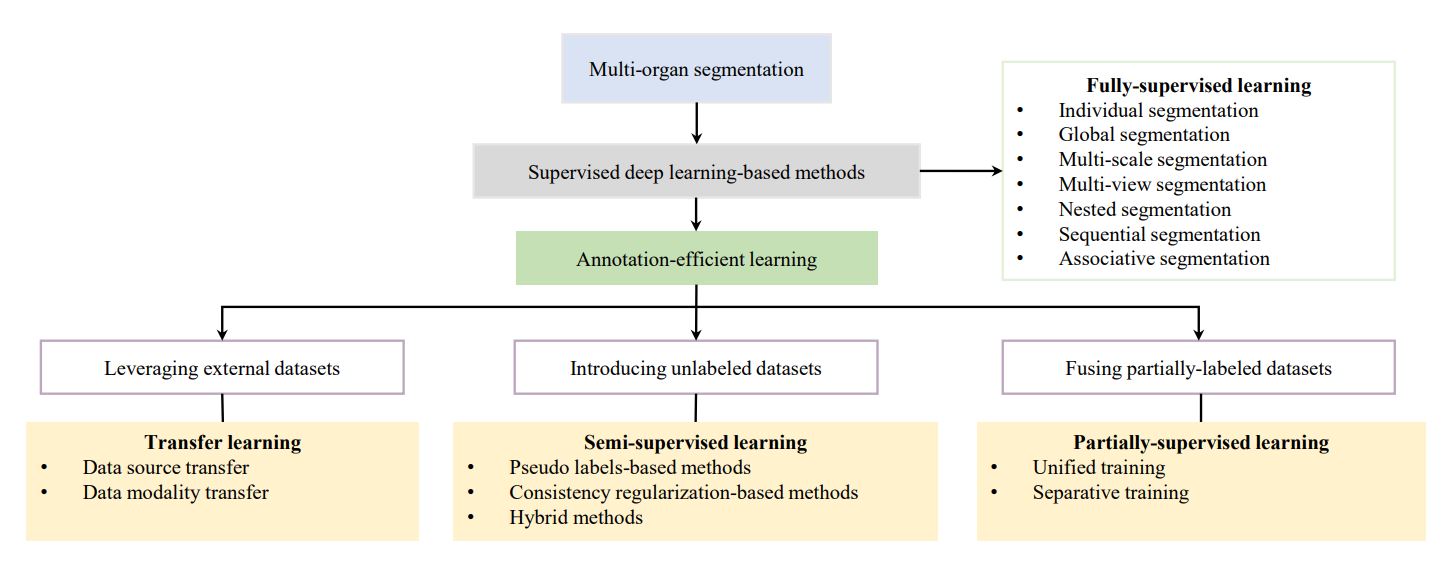

Multi-organ segmentation: a progressive exploration of learning paradigms under scarce annotation
Shiman Li, Haoran Wang, Yucong Meng, Chenxi Zhang†, Zhijian Song†
Physics in Medicine and Biology (IF = 3.5)
Abstract
Precise delineation of multiple organs or abnormal regions in the human body from medical images plays an essential role in computer-aided diagnosis, surgical simulation, image-guided interventions, and especially in radiotherapy treatment planning. Thus, it is of great significance to explore automatic segmentation approaches, among which deep learning-based approaches have evolved rapidly and witnessed remarkable progress in multi-organ segmentation. However, obtaining an appropriately sized and fine-grained annotated dataset of multiple organs is extremely hard and expensive. Such scarce annotation limits the development of high-performance multi-organ segmentation models but promotes many annotation-efficient learning paradigms. Among these, studies on transfer learning leveraging external datasets, semi-supervised learning including unannotated datasets and partially-supervised learning integrating partially-labeled datasets have led the dominant way to break such dilemmas in multi-organ segmentation. We first review the fully supervised method, then present a comprehensive and systematic elaboration of the 3 abovementioned learning paradigms in the context of multi-organ segmentation from both technical and methodological perspectives, and finally summarize their challenges and future trends.
